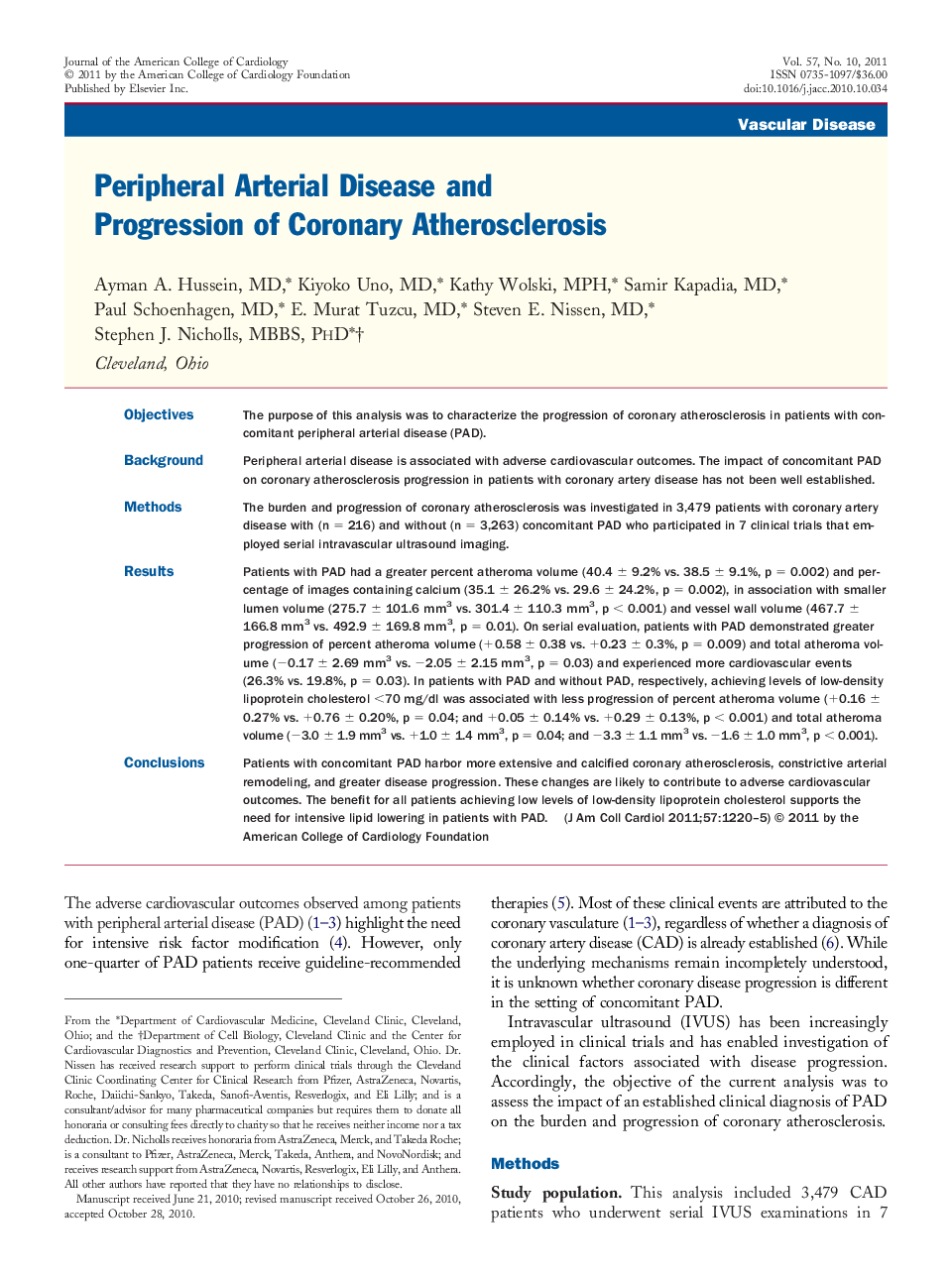| Article ID | Journal | Published Year | Pages | File Type |
|---|---|---|---|---|
| 2949544 | Journal of the American College of Cardiology | 2011 | 6 Pages |
ObjectivesThe purpose of this analysis was to characterize the progression of coronary atherosclerosis in patients with concomitant peripheral arterial disease (PAD).BackgroundPeripheral arterial disease is associated with adverse cardiovascular outcomes. The impact of concomitant PAD on coronary atherosclerosis progression in patients with coronary artery disease has not been well established.MethodsThe burden and progression of coronary atherosclerosis was investigated in 3,479 patients with coronary artery disease with (n = 216) and without (n = 3,263) concomitant PAD who participated in 7 clinical trials that employed serial intravascular ultrasound imaging.ResultsPatients with PAD had a greater percent atheroma volume (40.4 ± 9.2% vs. 38.5 ± 9.1%, p = 0.002) and percentage of images containing calcium (35.1 ± 26.2% vs. 29.6 ± 24.2%, p = 0.002), in association with smaller lumen volume (275.7 ± 101.6 mm3 vs. 301.4 ± 110.3 mm3, p < 0.001) and vessel wall volume (467.7 ± 166.8 mm3 vs. 492.9 ± 169.8 mm3, p = 0.01). On serial evaluation, patients with PAD demonstrated greater progression of percent atheroma volume (+0.58 ± 0.38 vs. +0.23 ± 0.3%, p = 0.009) and total atheroma volume (−0.17 ± 2.69 mm3 vs. −2.05 ± 2.15 mm3, p = 0.03) and experienced more cardiovascular events (26.3% vs. 19.8%, p = 0.03). In patients with PAD and without PAD, respectively, achieving levels of low-density lipoprotein cholesterol <70 mg/dl was associated with less progression of percent atheroma volume (+0.16 ± 0.27% vs. +0.76 ± 0.20%, p = 0.04; and +0.05 ± 0.14% vs. +0.29 ± 0.13%, p < 0.001) and total atheroma volume (−3.0 ± 1.9 mm3 vs. +1.0 ± 1.4 mm3, p = 0.04; and −3.3 ± 1.1 mm3 vs. −1.6 ± 1.0 mm3, p < 0.001).ConclusionsPatients with concomitant PAD harbor more extensive and calcified coronary atherosclerosis, constrictive arterial remodeling, and greater disease progression. These changes are likely to contribute to adverse cardiovascular outcomes. The benefit for all patients achieving low levels of low-density lipoprotein cholesterol supports the need for intensive lipid lowering in patients with PAD.
